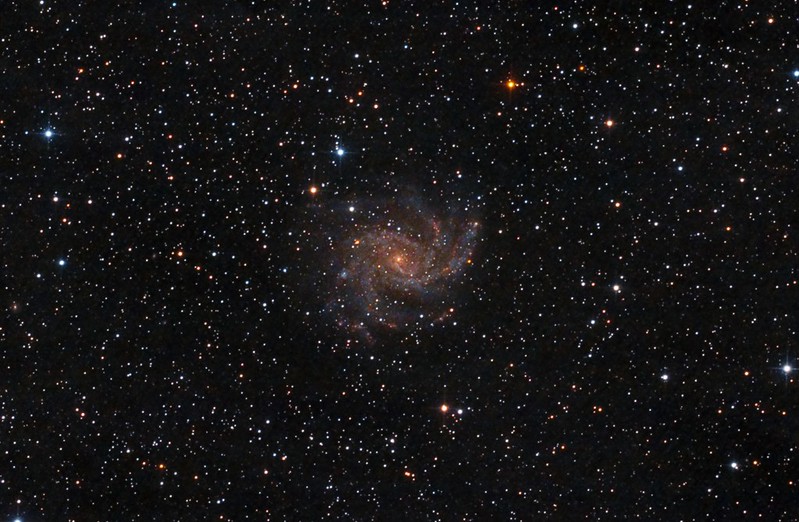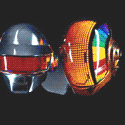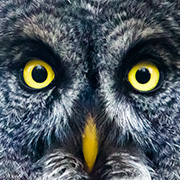|
OK, that's the same as mine, so RGGB should be the correct mask, and I use VNG method. The other thing to check is your DSLR_RAW settings in Pix, which should be as follows (taken from the Pix forums): View > Explorer Windows > Format Explorer Format Explorer - Double click DSLR_RAW (Edit Preferences - select) RAW Format Preferences Color Adjustment - all 3 sliders = 1.0000000 White balance - deselect all Create RAW debayer image - select No black point correction - select OK Check that and change it if you have anything different configured. If you do re-run your processing right from the beginning.
|
|
|
|

|
| # ? May 10, 2024 21:17 |
|
I'll check those settings when I get home tonight. I really need to research how to create and use flats, darks and bias images properly too. I think that would really help my images. M51 had some severe vignetting.
|
|
|
|
Dark and bias at least are very easy you could take some tonight to add to your images, mine are normally good for a week or two, it helps to match temperature if you can though. Flats unfortunately are somewhat more annoying to get right, as you cannot do anything to the camera or focus until after you have taken them.
|
|
|
|
Had a chance to check those settings. One of the white balance boxes was checked (think it was use camera white balance) and neither the create bayer image nor black point correction were checked. I am going to try reprocessing in the next couple days and see if that helps. Thanks for the info!
|
|
|
|
Perfunctory Perseids viewing report from near Austin, TX. Watched for about 15 minutes, saw 3 bright meteors. (They would have to be fairly bright for me to see them, as the combination of light pollution and some light clouds makes my limiting magnitude tonight probably 3 at best.) Will prob look again at around 4 am to see if rate has increased.
|
|
|
|
Oh man, I keep forgetting about this thread.  In the time since I last posted here (10 months!) I got my first Nagler (13mm) and a Telrad. The Telrad is truly a badass motherfucker. Big, bulky, kind of ugly yet right at home on top of an XT8. Now I'm saving up for a 26mm Nagler unless someone can convince me to spend $50 more for the 31. I'm in the midst of turning a Stanley FatMax toolbox into an accessory kit. Top chest area can hold charts, magazines, an iPad, etc. and the tray is good for pens and flashlights. Best part is the bottom pull-out drawer that is currently home to some EPs and related items like filters. It's almost as if this thing was made for astronomy instead of tools. Toolbox was about $45 at Walmart. Since foam isn't cheap and no one here in Canada seems to sell it (or at least for a reasonable price) I'm thinking of just using something like this http://www.astronomics.com/main/product.asp/catalog_name/Astronomics/category_name/6DFJ1DXV9W3V9JA0MEDA3065B4/product_id/EPB for my EPs. Anyone else here use these and/or have experience with them? Finally, tomorrow I'm starting a modification to the base of my XT8. I've never liked how it rotates on the teflon pads, it always seems to bind slightly on one of them. Tried a "fix" using pieces cut from a plastic milk jug between the bolt/washer and the base but as relatively smooth as that is there's wobble involved because it's uneven. Old CD/DVD-Rs never worked for me. So as luck would have it my in-laws were visiting the other week, they have a 5th wheel. They brought over one of their teflon (or is it nylon? not sure) lube discs. We sandwiched it between the two pieces of the dob base and it worked nearly perfectly. It's wide enough to give it stability and smooth enough that it doesn't bind when rotating the scope, so we ordered a 12" disc from our local RV dealer. If anyone is interested I can post a few photos of the project and how it all goes together. There are a few more components to it than just the disc (needed a plastic plate to site in the middle of the disc so it doesn't move about too much) but all in all it can be done for about $20 or less. On the other hand I don't really recommend anyone try it until it's done "for real" because I'd rather not have people get frustrated/angry/waste money. 
|
|
|
|
Took advantage of the moon being absent last night and spent about 4 hours on the Veil Nebula. Stack of 20x200s, 15x300s, 15x360, Darks. I think I may have went a little heavy on saturation, but I am pretty happy with the result. Veil Nebula 8-18-2012 Final by elimisel, on Flickr
|
|
|
|
My recent haul. NGC6820/NGC6823 by tmarkuk, on Flickr  NGC6946 The Fireworks Galaxy by tmarkuk, on Flickr  NGC281 - The Pac-Man Nebula by tmarkuk, on Flickr I've been having some focuser slop issues since fitting a motor to it a few weeks back which hopefully I now have resolved. Hence the funny shaped stars in some of these images.
|
|
|
|
Wow, really nice Pac-man nebula. Great shot!
|
|
|
|
Another from the weekend: M101 - Pinwheel Galaxy 8-18-2012 Final by elimisel, on Flickr Stack of 20x360sec. Dark subtraction.
|
|
|
|
Welp, it has been a couple of years since I checked into the thread, but I figured I'd wander in to gloat a bit. Getting my first H-alpha scope tomorrow night, a brand new PST with case from a member of my astronomy club for about half of regular price. Story goes like this. He had a PST from the first production run that over time developed the dreaded "rust." He sent it back to Meade for repair, they fix it, ship it back out and... it never arrived. Turns out FedEx lost the scope somewhere in Utah. It took him a better part of a year to get everything settled between FedEx and Meade. Of course he started to get impatient and ordered a Lunt 60 Pressure Tuned double stack rig in the meantime. Once Meade gets everything squared away, they send him a brand new, fresh off the lines PST... which is now utterly redundant. So I'm getting a screaming deal. Can't wait to get my hands on that beautiful new toy tomorrow!
|
|
|
|
So, I've been doing some basic astrophotography in my free time for the past 6 years or so, and slowly upgrading my set up as I go. I'm currently using a Canon Rebel DSLR to image through an Orion 100mm refractor on a GoTo mount. I now have good enough tracking to take pretty good pictures through my DLSR. However, I lack the technical expertise in photography and photoediting (stacking, taking flats, etc). How did you guys gain your knowledge of the more complicated camerawork? Right now I'm stuck just putting the camera on 1600 ISO and just doing single exposures with noise correction, because I simply don't know how else to do it. Every resource I've tried to use to get help on those topics has been so far above my level of knowledge that I have a hard time understanding. Vertigo One fucked around with this message at 02:53 on Aug 22, 2012 |
|
|
|
Vertigo One posted:So, I've been doing some basic astrophotography in my free time for the past 6 years or so, and slowly upgrading my set up as I go. I'm currently using a Canon Rebel DSLR to image through an Orion 100mm refractor on a GoTo mount. I started out with Deep Sky Stacker and whatever online tutorials I could fine, it's pretty basic and easy to use and will help you get a good ides of the process. There are plenty of tutorials on youtube, but here is a nicely written one to get you started on basic stacking without any calibration frames: http://flintstonestargazing.com/2009/06/26/my-quick-deepskystacker-tutorial/ You should start capturing stacks of images for this instead of single shots, all the same exposure, whatever you can get away with before stars start trailing. Once you have a stack start working on that process and see what you get. Now, once you have the hang of that you need to start adding bias and dark frames into the mix, they are simple to take and simple to use in DSS but get the basics going first.
|
|
|
|
I'm guessing deep sky stacker isn't really intended for this sort of thing, but are there any apps that would help me stack meteor shots? I'm mostly trying to get the best possible shot out of a series of 5 that have the ISS in them, here: http://www.flickr.com/photos/justinkent/7767798748/in/set-72157631053010060/ but I have a few more frames with meteors from the same composition that I'd like to include and I have been looking for a way to automate it or some tips for processing star photos in lightroom and merging the layers in photoshop.
|
|
|
|
MMD3 posted:I'm guessing deep sky stacker isn't really intended for this sort of thing, but are there any apps that would help me stack meteor shots? I honestly don't know if I would stack those. I think they look fantastic as is.
|
|
|
|
Choicecut posted:I honestly don't know if I would stack those. I think they look fantastic as is. I was hoping to get a single exposure with the ISS' full path. since there's a 1 second pause between 30s exposures it'd essentially look like a dashed line passing right over the mountain. At a minimum I'd like to brighten up the exposure without adding a ton of noise but I really think I'd like the shot to show the full path as well as a few meteors. This is what the photog that was standing next to me did: http://www.flickr.com/photos/masonmarsh/7768556194/in/photostream http://www.flickr.com/photos/masonmarsh/7790063594/in/photostream
|
|
|
|
Your best bet would be layering and transparency in photoshop at a guess. Astro stacking software is really there to remove outliers and artifacts, which is how it would treat your meteors and ISS, we specifically use it to drop things like satellite trails. I'm not sure how he did his, but I would pick the best image as a primary layer, then layer the other images behind and use a transparency brush to make the trails from the other images visible. Probably do one at a time, make a trail visible, flatten the image when you are happy, then carry on with the next. You can see on the full size of his image where the trails have slightly different coloured sky around them, my guess is that this is the technique he is using. I used a similar technique to put together an image of comet 103p Hartley a while back. The opposite way round to what you want to do really but a useful enough technique to talk about here anyway. So take a stack of images of a moving object, take a copy so you have two duplicate stacks. Stack the first set normally using the stars but with a very aggressive setting to remove the outlier feature (the comet) so you end up with a nice flat image of the background stars. With the second stack manually align them on the comet instead (Pixinsight has a nice tool for manual align) then stack again, this should give us a nice image of the comet but with the stars treated as outliers and removed. Take both finished images and layer in PS/Gimp/Whatever with the stars on top and use a feathered transparency brush to make the comet visible on the star field where it should be. So here is a short video I made from the raw frames https://www.youtube.com/watch?v=cn107_EM50A And here is the single image I created from the same data :  Also, whilst I'm posting videos this is Jupiter from my back garden last year under very steady conditions : https://www.youtube.com/watch?v=b5pqeTv7swA Jekub fucked around with this message at 18:21 on Aug 22, 2012 |
|
|
|
Thank you for the help Jekub! That's the most helpful tutorial I've read so far. I'm going back out tonight, and I'll be focusing on the Whirlpool galaxy in order to work with a subject I have good experience with. So far, I'm getting trailing at about 2 minutes of exposure (still practicing polar alignment and proper calibration), so I'll try stacking several 90 second exposures to see what I get.
|
|
|
|
Get as many as you can, the more the better, up to a limit anyway.
|
|
|
|
So I got about 8 good frames of the Whirlpool Galaxy, and a couple other messier object shots before I decided to call it quits. The west nile outbreak in texas is making it pretty hard for me to be outside for extended periods of time. I got absolutely decimated by mosquitoes even with long clothes and tons of DEET. Thanks for the help Jekub! I've installed Deep Sky Stacker and I'm getting the hang of it. I should hopefully have some pictures to post pretty soon.
|
|
|
|
I currently have a DSLR and have already tried turning it skywards mounted on my tripod. Other than a keen, but only starter, knowledge in astronomy that's my only experience with astro photography. I'm looking for a mount that will go on top of my tripod that has the ability to track the sky. Has anyone had any experience with the Orion Min-EQ (with motor) table top mount, if so, what are your thoughts? Another option would be a barn door mount on my tripod, is there anywhere that these can be bought online as I'm not the greatest at DIY, though I could probably manage given enough time to research and a few trips round my relatives to use their tools. Are there any other tripod mountable devices that I've missed that will do the job? Failing the above, what are the recommendations for an entry level computer guided telescope mount that would do the job? I'm assuming with these you can go back to photographing the same parts of the sky over numerous nights. Also, being able to later mount a telescope would be a plus. I'm also having trouble finding online astronomy shops in the UK, I think the best one I've found is http://www.scsastro.co.uk/ .. are there any others that come recomended? Thanks for your help. Edit: Edit2: I've read the last handful of pages and is it just the HEQ5 + CG-5 that I should be looking at? I'll keep a look out for second hand sales. Biggz fucked around with this message at 21:59 on Sep 3, 2012 |
|
|
|
Astrotrac.
|
|
|
|
The Vixen polarie is also worth a look. There are loads of very good astronomy dealers in the UK, my personal favourites being : http://www.modernastronomy.com/ http://www.firstlightoptics.com/ Both are very knowledgable and reliable. The Polarie is available from Astronomia down in Surrey, another nice bunch though I've not ordered from them before I have spoken to them a few times at shows. http://astronomia.co.uk/ The astrotrac and polarie are both expensive options, you might could also get away with a small motorised equatorial mount with it's own tripod.
|
|
|
|
Vertigo One posted:So I got about 8 good frames of the Whirlpool Galaxy, and a couple other messier object shots before I decided to call it quits. The west nile outbreak in texas is making it pretty hard for me to be outside for extended periods of time. I got absolutely decimated by mosquitoes even with long clothes and tons of DEET. Thermacell should save your life. A week or so ago I was doing some observing early in the morning and mosquitoes started coming out. They weren't that bad considering southern Manitoba is a haven for these things. Got frustrated, hauled my gear inside and started looking for solutions. Came across a Canadian astronomer from Northern Ontario who mentioned the Thermacell, did some more searching and found out that a ton of astronomers, both at astronomyforum.net and Cloudy Nights use that thing and it works. Spoke with a local astronomer here and he's got a friend who is a bush pilot up north (I think Northwest Territories) and he swears by it. Unfortunately I haven't had a chance to check it out because the wind is actually keeping them down! (just came in from a 40 min session, not much out there with the moon but it was too nice to pass up) Bought a Thermacell a week ago at Canadian Tire, costs $30 but is probably a bit cheaper in the States. Doesn't run on batteries, uses butane. Base unit has 1 butane cartridge and 3 mats. Can get a refill pack that has 3 repellant mats and a butane cartridge that only costs a few dollars. I splurged and bought the 12 pack with 3 butane cartridge for about the same price as the unit, but it'll last me a long time. Just wish I would have looked into this before spring and summer, damnit. Also want to say that these photos you guys are taking are awesome. There are days where I wish I didn't have a dobsonian. 
|
|
|
|
Cherokee Jack posted:Also want to say that these photos you guys are taking are awesome. There are days where I wish I didn't have a dobsonian. Speaking as a guy with a photo-scope and no dobsonian, the grass is greener on both sides. I haven't gotten in any decent scope time in a year or something, and a six-incher isn't -that- fantastic visually in moderate light pollution.
|
|
|
|
Wolf on Air posted:Speaking as a guy with a photo-scope and no dobsonian, the grass is greener on both sides. I haven't gotten in any decent scope time in a year or something, and a six-incher isn't -that- fantastic visually in moderate light pollution. Lugging around an 8" can be pretty difficult at times. I'm getting used to it and I can take it in and out on my own which is pretty good considering I have the world's shittiest steps. Winter should be an adventure. Today I bought an aluminum "work platform" on sale half-priced at $35. It's going to be my all purpose table. Not very deep, only 12" but it's 37" wide and supports lots of weight. So it can be sat on, you can stand on it, my FatMax "accessory kit" fits on it and there's still enough room for things like a star chart, coffee, etc. I should buy a bunch and rebadge them as "Astronomy Multi-Purpose Platforms" and make a ton of money. Only $150! Accept no imitation platforms!
|
|
|
|
Comet "ISON" discovered 9/21, some reports predict this could be an insanely bright comet in Nov/Dec of 2013. A comet brighter than the full moon? http://news.nationalgeographic.com/news/2012/09/120927-new-comet-2012-s1-ison-science-space-moon/
|
|
|
|
Number_6 posted:Comet "ISON" discovered 9/21, some reports predict this could be an insanely bright comet in Nov/Dec of 2013. A comet brighter than the full moon? I will be surprised if the prediction is correct. I have seen this before where the media takes something like this and runs crazy with it. It is so hard to predict things like this, especially when there is a good chance it could burn up when it rounds the Sun. That being said, I sure loving hope the prediction is right!
|
|
|
|
I was all set on getting an Orion XT8, but then I discovered the Apertura ad10. The reviews seems really good for the price, but they haven't been mentioned yet in this thread (I think). Anyone have an opinion on this? It will be my first scope. I like in Oklahoma City, but have fairly easy access to pitch black country land. That's my only real question. What follows below is a story about me checking out my local astronomy club and being pretty disappointed. On another note: I checked out our local astronomy club at their last meeting. I found out they existed during a 5K I ran. It was a midnight run and they had a few people set up outside. It was really cool of them and I was excited about joining a cool, helpful group of space nuts. The meeting was two parts. The first part was a novice session in a planetarium (located at the OKC Science Museum). That part was awesome. A guy showed us some constellations and galaxies and some neat stuff. Although I thought it was awesome, I felt a little bad since it seemed to be the same presentation that you can pay money for at any time. It was so good I gladly would have just paid to see it, especially after seeing the second part. The second part of the meeting was the actual "meeting" part. The meeting's structure is a brief lecture on constellations that are currently in the sky, followed by a guest lecture that lasts for about an hour. I think I might check out a star party if I find one and have time. In the meantime I want to get a telescope (I already have binoculars) and that Turn Left book and learn as much as I can on my own. Obsolete fucked around with this message at 02:38 on Nov 11, 2012 |
|
|
|
If you're in OK City, Astronomics, one of the biggest telescope retailers in the US is in Norman.
|
|
|
|
So I've had my 8 inch dobsonian since May and I think it's time I upgraded my eyepieces from the supplied 25mm and 10mm. My telescope has a focal length of 1200mm and is f/5.9. Reading around it seems that a 5mm EP is the shortest I would want to go with this telescope (I live in the UK), is this right? And what about on the other end? It seems that you can get EP up to 40mm and beyond. If I wanted a low power, wide FOV, what would be my best bet?
Vain fucked around with this message at 21:00 on Oct 6, 2012 |
|
|
|
5s6pErNCxh44S528jSuH IwNFilC5TJDQN9M2F0N1 qw7fDNiHz7nELLmekQ6P IZRjaVAH0033EAjH33a4 goYQlvmX7kfvj4HJHUTV yCdAbyhBNBznKg6CVI98 sDxsIfwHcU68Qwjz31Ha Nik7jX9Ij0Gc1sQyov2C O1yccQAz6169mXVgcvai SJZ4DjhZhD0qQQJqYCzw Plasmafountain fucked around with this message at 19:57 on Feb 28, 2023 |
|
|
|
Zero Gravitas posted:Thought I'd cross post to this thread from the Physics discussion thread in A/T> Sciences etc. I'm trying to understand the design you're going for exactly. Do you mean something kinda similar to the Giant Magellan Telescope?
|
|
|
|
XQtMarQfBtJHNTte6cHm UsdHI1nikcFFfv6pKPXH 5r2kO7qazMlsZa0I0whF hkFNDCFkrF77T4dc83AR 8V71xupCoAWKuHiWcOZS vE3rqxXUuIZitodQM26z E775Wj9Eaqa3TQGTagom fzVpWmZsJfHNsbl460TJ CPOiS2HYafAm3F43CGxV wfvpwO9SEGs1RzO3jyuo Plasmafountain fucked around with this message at 19:57 on Feb 28, 2023 |
|
|
|
Bolkovr posted:If you're in OK City, Astronomics, one of the biggest telescope retailers in the US is in Norman. Holy poo poo! I had no idea. Thank you for that info. I will go visit them on Friday.
|
|
|
|
Vain posted:So I've had my 8 inch dobsonian since May and I think it's time I upgraded my eyepieces from the supplied 25mm and 10mm. My telescope has a focal length of 1200mm and is f/5.9. Reading around it seems that a 5mm EP is the shortest I would want to go with this telescope (I live in the UK), is this right? And what about on the other end? It seems that you can get EP up to 40mm and beyond. If I wanted a low power, wide FOV, what would be my best bet? To be totally honest, seeing conditions will RARELY allow you to use a 5mm EP, especially with the usually iffy seeing in the UK. I'd say the lowest you would want to go is in to 6 to 7 range and to avoid Plossls in the focal length because the eye lenses are way too small to allow comfortable observing. Better to get something with long eye relief like the Zhumell LER eyepieces. In terms of longer focal length eyepieces, here's one important thing to consider. Does your dob have a 1.25" or 2" focuser? The reason being that 1.25" eyepieces can only allow for so much true field before they suffer from the law of diminishing returns. For example a 1.25" 40mm Plossl can only show as much of the sky as a 32mm Plossl because the barrel size constrains it to a narrower apparent field. If, on the other hand, you have a 2" focuser on your scope, there's a whole world of longer focal length eyepieces you can use to get incredible low power, wide field views. They will be expensive, though. Edited because holy poo poo, the Awful iPhone app really hates umlauts!
|
|
|
|
So this is probably a bit of a stupid question, but it's about time I learn the proper method. Up until now I've been using the dark frame subtraction built into my Canon DSLR, and I'm not sure of the correct way to do the subtraction. I see that Deep Sky Stacker has an option to open dark frames. First, how do I go about obtaining a dark frame? Do I just take a picture with my lens cap on for the same time as my exposures? Second, how do I then use that dark frame in Deep Sky Stacker? As long as I open it as a dark frame and have it checked along with the light frames, will it take care of it for me? (I've been following these instructions)
|
|
|
|
I just went through all pages of this thread and wanted to thank all the goons who have been posting lots of awesome photos and info over the years. That said, I think I'm missing something fundamental in my understanding when it comes to astronomy/astrophotography. For normal photography I have a 600mm lens, my camera body has a 1.6x crop sensor, and if I put a 1.4x teleconverter on there I can basically fill my entire picture frame with the moon (600mm x 1.4 x 1.6 = 1344mm). When I look through this thread I see people like Jekub posting pictures of other planets or galaxies taken with a ~450mm (I think) telescope. How? Is that because there is an eyepiece on the telescope that is further "zooming" in on the field of view created by the telescope? Is there a way to achieve the same magnification with a normal camera lens? I would love to get into astrophotography, and I know at a minimum I'll need at least a tracking mount, but I would prefer to use as much of my existing camera equipment if at all possible. The simplest solution seems to be the piggy-backing method described here but I can't imagine that working so well with my 15 lb camera/lens, nor can I imagine it taking very good pictures of distant points of interest. Any help/advice would be appreciated.
|
|
|
|
For Jekub and Choicecut, your pictures look great. Do you guys keep any kind of logs for the quality of seeing on the nights you take pictures?
|
|
|
|

|
| # ? May 10, 2024 21:17 |
|
InternetJunky posted:I just went through all pages of this thread and wanted to thank all the goons who have been posting lots of awesome photos and info over the years. That said, I think I'm missing something fundamental in my understanding when it comes to astronomy/astrophotography. I'm curious if anyone has any input on my choice of mount (CGEM DX Mount) or autoguider (Orion Autoguider and 80mm Refractor package)? I'm going to try using my existing camera lenses initially rather than purchasing a telescope for imaging. My main concern is that the mount is strong enough to support my lens+camera (~15 lbs) plus autoguider (which the CGEM DX seems to be). I also need to pick up a laptop and was wondering if there's anything special I should consider?
|
|
|















